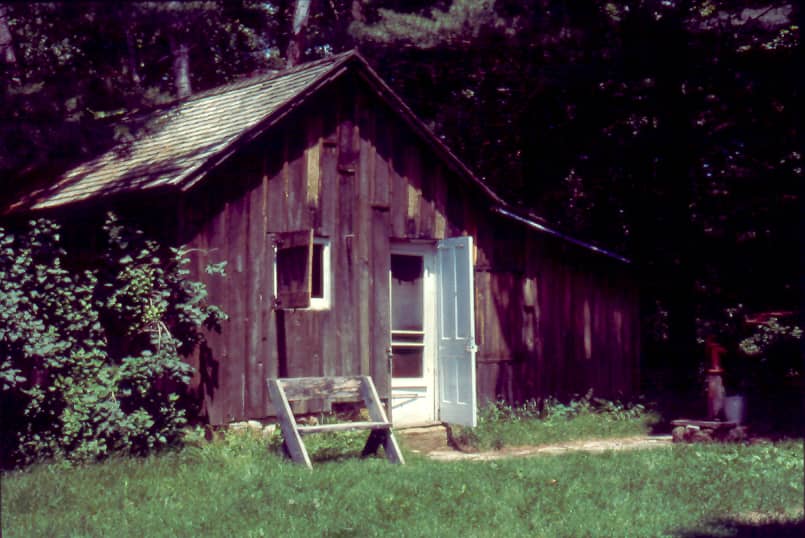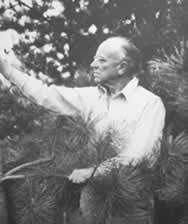Aldo Leopold’s Shack: An Outdoor Sportsman’s Sacred Place
James Swan 03.15.13

There are places to hunt and fish, and then there are places where deer and ducks are everywhere, trout are jumping into your creel, the landscape is spectacular and you’re not elbow-to-elbow with others bent on the same pursuit.
Those places are secret places for the most part, shared sparingly only with close friends–because secret fishing and hunting places can be over-used, reducing their original value.
There are many other kinds of special places that have a magnetic draw for people, some famous: Stonehenge, Machu Picchu, Lourdes, Jerusalem, the Great Pyramid, Mount Fuji, Haleakala Crater, Mount Rushmore, Mesa Verde, the Ganges River, Mount Denali, and so on. Visiting such places is one of the most powerful of all world tourism motivations, and one of the least understood by modern science, I might add.
Aside from places with an abundance of fish and game, there are also places special to sportsmen that hold special significance to the culture of sports. Visiting the Basilica of Saint Hubert (the patron saint of hunting) in the Ardennes Forest of Belgium for example, would certainly be such a special place. There are other similar special places for outdoor sportsmen in North America, though perhaps not so obvious.
I once spent a morning in California’s Suisun Marsh hunting from a duck blind that Herbert Hoover used to frequent. We did not bag limits of ducks that morning, but there was something special about sitting in the old wooden box sunk down into the mud. Watching the sun wake up in the eastern sky, you got a sense of history as you realized that you are but one link of a long chain of hunters who have gone afield before you.
A place like that makes you feel humble. It also is inspirational.
There are many special places of historical value to sportsmen, but to my mind, the ultimate outdoorsman’s special place in North America is a simple wooden shack, not quite as big as a one-car garage, standing in a grove of hardwoods, not far from the Wisconsin River that quietly slips by like a bluesy note on a slide guitar.
No electricity. A stone fireplace made almost entirely from glacial boulders found right on the land. The timbers are a mixed blend of lumber from the original building, a chicken coop, and driftwood boards salvaged out of the river and others cut by hand from fallen trees on the land. This shack is hardly pretentious, but in terms of conservation of natural resources this place is hallowed ground.
If you didn’t know what this shack was, you might think it was a relic of the Great Depression that somehow survived the years. In part, it is. But this simple wooden building was the incubation chamber for perhaps the single-most important book on wildlife conservation that has ever been written–Aldo Leopold’s A Sand County Almanac.
In 1935 Aldo Leopold was teaching at the University of Wisconsin in Madison. One of the founders of the Wilderness Society and architect of the original wildlife management policy on Forest Service lands, Leopold had a passion for wildlife that led him to become the prime moving force in creating the science of wildlife management that guides fish and game departments around the world today. He was, in fact, the first professor of that field.
Leopold’s passion for his work often placed great demands on him. He needed a retreat to restore himself. He told a realtor that he wanted to find a place near Madison where he could immerse himself in nature, place that was remote and hard to get to; the more primitive the better.
The realtor showed him a 300-acre abandoned farm on some poor sandy soil along the Wisconsin River just north of Baraboo. It had an old chicken coop on it. Leopold immediately declared that this was the place, even though there was a foot of chicken manure on the floor of the shed.
Over the next 12 years, Aldo Leopold, his wife Estella, and their five children spent many weekends and summers at the shack. After cleaning it out, they added a bunkroom built with driftwood and hand-cut lumber and replaced the earth floor with rough boards. The building grew out of roots in the place, becoming an expression of the spirit of the land.The Leopolds also planted thousands of pine trees, hoping to restore some of the original pine forest that had been logged off the land. Nearly all of the trees died, as this was the Dust Bowl era. Still, some made it and can be seen today in the mixed woods and prairie around the shack.

In his visits to the shack, Aldo Leopold took notes on what he saw and felt. He organized them into a calendar year of reflection about the moods of nature. Those observations served as a platform to put forth his ideas that represent a guiding philosophy of natural resources management that today is honored all around the world.
The science of ecology was already conceived in Leopold’s time, but with the help of the shack and the land he showed how conservation is ultimately a matter of ethics, and even soul, as much as science.
The single most important guiding concept to help man act in accord with nature, in Leopold’s view, is the “Land Ethic,” which he defined as: “A thing is right when it tends to preserve the integrity, stability, and beauty of the biotic community. It is wrong when it tends otherwise.”
“That land is a community is the basic concept of ecology,” Leopold wrote, “but that land is to be loved and respected is an extension of ethics.”
If someone develops an ethical relationship with the land, it “… reflects the existence of an ecological conscience, and this in turn reflects a conviction of individual responsibility for the health of the land,” Leopold asserted.
This statement ranks alongside Gifford Pinchot and Teddy Roosevelt’s delimitation of “conservation”–the wise use of natural resources for the greatest good for the greatest number over time–as among the most powerful guiding conservation ethics modern man has proposed.
Thanks to the Leopold family, today anyone can visit Leopold’s shack, which is maintained by the Aldo Leopold Foundation, located in Baraboo.
A total of 1,400 acres are now preserved in the Aldo Leopold Memorial Reserve. The foundation is restoring some original prairielands, but all the land is managed in keeping with Leopold’s land ethic, which is being applied to a growing number of acres of farms, homes and retreats nearby; quietly spreading across the land like wildflower seeds blown by the winds.
A respectful distance from “the shack” is a modern interpretive center where the Leopold legacy is on display.
In A Sand County Almanac, Leopold wrote: “Barring love and war, few enterprises are undertaken with such abandon, or by such diverse individuals, or with so paradoxical a mixture of appetite and altruism, as that group of avocations known as outdoor recreation. It is, by common consent, a good thing for people to get back to nature.”
For someone who loves nature and wild things, visiting Leopold’s shack is a moving experience I cannot recommend enough. It truly is holy ground.
As an academic, I have studied the psychology of what may happen when a person visits a special place. Some people report powerful inspirational, even spiritual experiences that change their lives. The Conservation Movement, for example, was born in an ecstatic experience that Gifford Pinchot had while riding his horse through Rock Creek Park in Washington, D.C. in 1902.
Others find a delayed reaction that creeps into their soul after leaving the place. Writers always hope that some of the spirit of a place that inspired a great writer will rub off on them. However, you can never predict how a place may affect you–here’s two personal examples.
A few years ago I was invited to give a lecture at Aldo Leopold’s shack. My “pay” for the presentation was spending the night sleeping in a sleeping bag in the shack. The value of that, of course, was priceless.
When I made my pilgrimage to Baraboo, however, spring had been very wet, producing a bumper crop of mosquitos. So, when I visited the shack to pay my respects, the aerial greeting committee was swarming and I had to wear full mosquito netting, as no repellent known to man would keep them away (and we tried many). As a result, to have the audience not devoured by mosquitos, my lecture was given in town, and my bed was at a motel. Personally, I think Aldo would have liked that. The experience proved that NATURE is always, in the long run, the boss.
I’ve also always admired the beauty and simplicity of Ernest Hemingway’s writing. For a time when I was in college, I went on a quest to visit some of Hemingway’s special places, such as Key West, or the Big Two-Hearted River in Michigan. Did it help? Not sure, but is it purely coincidental that in 2010 I was cast to play a part in the feature film Hemingway and Gellhorn starring Clive Owen and Nicole Kidman? And what part did I play? I was a rowdy drunk sitting in Sloppy Joe’s Bar in Key West, a place that I had visited when I was in college.
The meaning of that happening? Come to think of it, I was on Spring Break when I visited Sloppy Joe’s.

